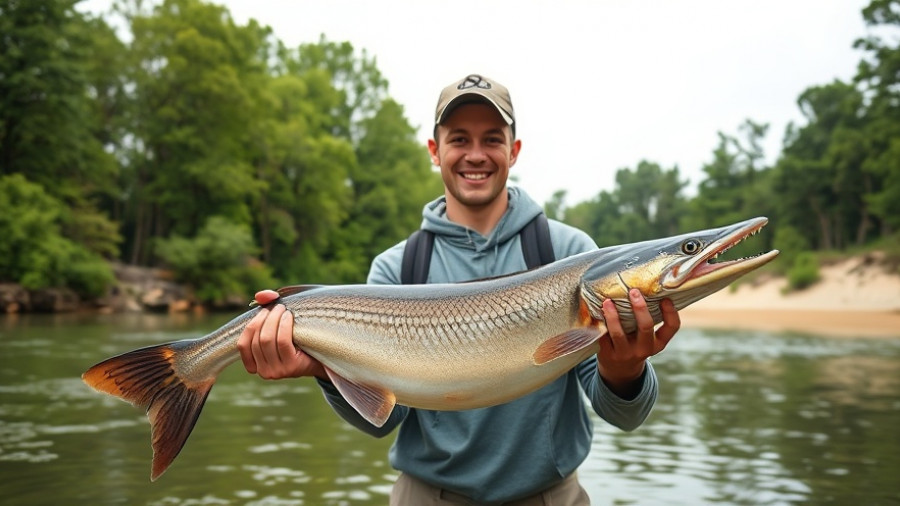
The Thriving Population of Shovelnose Sturgeon in the Rock River
In the picture-perfect waters of Illinois, the Rock River is home to a surprising phenomenon: a flourishing population of shovelnose sturgeon. Researcher Stefan Tucker from the Illinois Natural History Survey is delving into the unexpected abundance of these ancient fish, as they defy the expected status of many sturgeon species, which are increasingly endangered. Tucker and his team are leveraging both traditional and innovative research methods, such as electrofishing and acoustic telemetry, to understand why the Rock River's shovelnose sturgeon are thriving.
A Deeper Dive into Research Methods
Shovelnose sturgeon are the smallest members of North America’s sturgeon species and have been closely monitored due to their delicate status. The research team employs various methods to study the population dynamics, demographic aspects, and ecological impacts on their growth rates. One critical element of their research involves the innovative use of carbon dating techniques on the fish's otoliths—essentially their inner ear bones that accumulate growth rings. This method reliably estimates a fish's age, allowing researchers to gain better insights into their life cycle.
Factors Behind the Shovelnose Viability
So what is it that makes the Rock River sturgeon stand out? Tucker suggests that a ban on commercial fishing in the region plays a vital role, allowing the fish to mature and reproduce without the pressures that are common in heavily fished waters. As documented in Tucker’s findings, a notable 22% of shovelnose sturgeon caught were over 31.8 inches, a size very rarely seen in other populations. Comparatively, only 1% of shovelnose typically reach such lengths in less protected environments.
The Challenges of Sturgeon Conservation
Despite this local success, the challenges facing sturgeon populations globally remain daunting. Many species are threatened due to overfishing, pollution, and habitat loss caused by infrastructure developments such as dams. Research led by colleagues like Jeff Koch highlights that while some areas may be seeing positive trends, sturgeon across the board need continuous monitoring and protective regulations to ensure their survival. Focusing on one successful population provides an opportunity to create a conservation model that could be applied to others.
Future Directions for Shovelnose Research
The Rock River project is part of a broader collaborative initiative involving researchers from multiple states working together for a span of five to seven years. Notably, insights gained from the Rock River may serve as templates for managing sturgeon populations in different waterways across the Midwest. With ongoing studies supported by advanced technology and community engagement, there is hope that shovelnose sturgeons can thrive, transforming the understanding and management strategies of endangered fish species.
What You Can Do for Sturgeon Conservation
With local efforts proving effective, it’s vital for the community to stay engaged. Supporting organizations focused on river conservation and responsible fishing practices can contribute significantly to preserving these magnificent creatures. Moreover, community education on the ecological importance of sturgeon, along with active participation in conservation strategies, can further enhance the long-term success of these unique fish in the Rock River.
 Add Row
Add Row  Add
Add 




Write A Comment